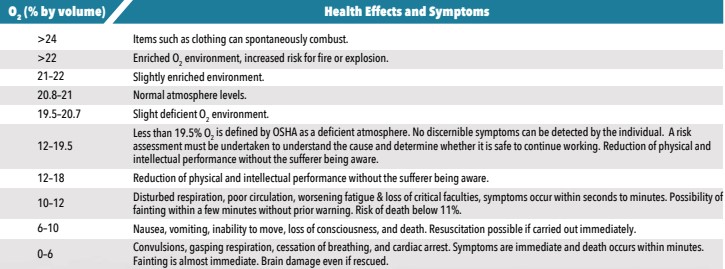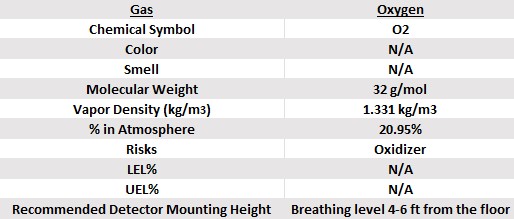Oxygen Gas
Posted by William Kimmell on 8th Jan 2023
Oxygen
December 29th, 2022, Sioux Falls, SD –
Oxygen (O2) is a colorless, odorless, tasteless gas essential to living organisms and beings taken up by animals. During respiration, animals and some bacteria take oxygen from the atmosphere and return it to carbon dioxide, whereas by photosynthesis, green plants assimilate carbon dioxide in the presence of sunlight and evolve free oxygen. The proportion of oxygen by volume in the atmosphere is 20.9 percent.
(O2) is an essential element in the respiratory process for most living cells and combustion processes. Too little or too much oxygen can be dangerous. Oxygen is an oxidizer, a type of chemical a fuel requires to burn.

Effects of O2
Oxygen Depletion:
Inert cryogenic liquids such as nitrogen, helium, or argon, once vaporized, both products will generate a large volume of cold, inert gas that will displace ambient air, causing oxygen depletion and may accumulate in low points.
Moderate low levels of oxygen health concerns consist of disturbed respiration, poor circulation, worsening fatigue & loss of critical faculties. Extreme low levels of oxygen cause the inability to move, loss of consciousness, brain damage, and death.
Oxygen Enrichment:
The risk of from oxygen enrichment exists where pure oxygen is stored. At 22% by vol. or greater, there is an increased risk for a fire/explosion. If oxygen levels exceed 24% by vol. or greater items such as clothing can spontaneously combust.
The health effects of oxygen enrichment consist of cough, dizziness, sore throat, and visual disturbances at very high concentrations.

A variety of labs use inert gases such as Nitrogen, Helium, and Argon tanks during their processes. Inert cryogenic liquids like Nitrogen, when vaporized, produce a large volume of cold, inert gas displacing air, causing oxygen deficiency, and may accumulate in low points.
Oxygen Gas Chart


